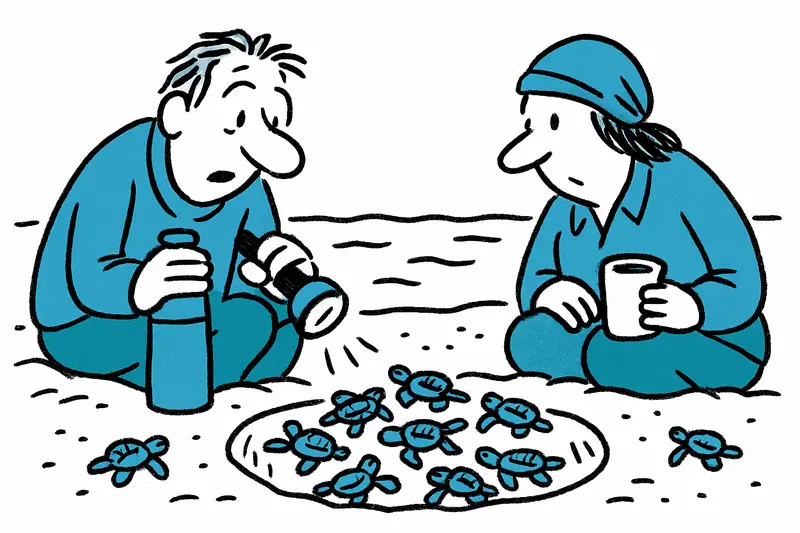Volunteers discovered 62 hatched sea turtles at Palma's city beach in early September. The youngsters are temporarily cared for in Port d'Andratx.
Early morning on the beach: the first turtles are here
On September 7, 2025, people with flashlights and thermos flasks stood on the sand of Palma's city beach, waiting. Not a normal beach stroll – but shift work for marine protection. In the early morning hours, the first sea turtles of the species Caretta caretta hatched. So far, 62 hatchlings have been counted.
Vigilance paid off
Since mid-July volunteers have been at the nest around the clock, bringing shovels, notebooks and lots of patience. They took turns in two-person teams; at night it was sometimes chilly, and at 3:30 a.m. there was coffee from thermoses and cookies, says one of the helpers who wishes to remain anonymous. Without this dedication the chance of releasing the animals into the water unimpeded would have been much smaller.
The hatchlings were immediately carefully recovered and placed in transport boxes with damp sand to the Institute of Marine Research in Port d'Andratx. There they are now examined, fed and looked after. The goal: to strengthen the little turtles enough that they can be released back into the Mediterranean in about a year – with better survival chances than right after hatching.
Why this care is important
Many of us know the images: small shells at dawn, nervous seagulls, children looking on in awe. But the journey from the nest to open water is dangerous. Beach lighting, predators, temperature stress – all this reduces the survival rate. At the protection station, biologists work with an experienced caregiver to ensure that the young turtles not only survive but grow up as healthy as possible.
Anyone walking by the city beach recently experienced a mix of excitement and routine: barrier tapes, a few beach chairs, two older men who habitually drink their espresso at 6 a.m. and comment, and in between the soft beeping of measuring devices. It is these small everyday scenes that show conservation is not one big spectacle but many small steps.
In the coming weeks, patient observation is in order. Volunteers and staff at the research station hope more hatchlings will emerge. And if you are walking on the beach now: please keep your distance, dim the flashlights and keep dogs on a leash. Every moment of quiet helps the last little ones find their way to the sea.
Similar News

Watch theft in Palma: Escape to Barcelona ends at the airport
A tourist in Palma was the victim of a brutal robbery. The suspect tried to flee but was arrested at Barcelona airport. ...

Severe Weather in Mallorca: Ongoing Delays at Palma Airport Cause Frustration
Due to heavy rain and thunderstorms, there are still significant delays at Palma Airport. Travelers from Germany should ...

Northern Lights over Mallorca: When and Where You Can See the Aurora Borealis
Between October 20 and 29, the Northern Lights could be visible over Mallorca. Who wouldn’t want to go to Scandinavia? A...

Costitx: Flowers, Stones, and a Look at the Starry Sky
Small village, big personality: Costitx blends blooming streets, ancient excavations, and an observatory - a day-trip ti...

Die Zeit auf Mallorca: Warum die Uhren hier anders ticken
Auf Mallorca läuft die Uhr offiziell anders als die Sonne — ein Erbe aus den 1940er-Jahren, das bis heute unseren Alltag...
